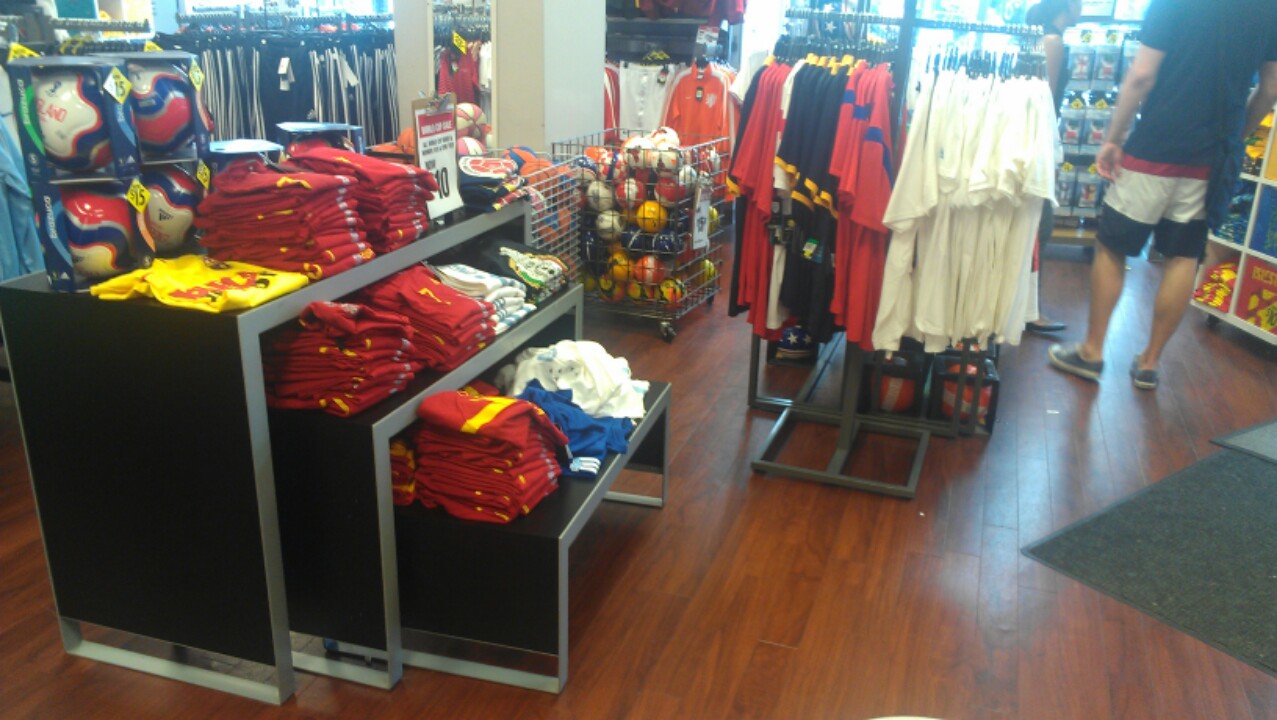WASHINGTON — The World Cup has to little surprise helped spark demand for soccer merchandise, but some say the increased interest may last.
“There’s been a lot of excitement around the World Cup and it’s re-engaged the casual soccer fan and player,” said Jason Karlowski, manager of sports marketing and public relations for New York-based Modell’s Sporting Goods.
Up to this point, sporting goods stores have seen an uptick in soccer merchandise sales since the World Cup began last month.
“We’ve seen increases in not only World Cup and [Major League Soccer] merchandise but generic soccer balls, shin guards and cleats,” Karlowski said.
Adidas, official sponsor and supplier of the World Cup, said last month it is on pace to sell more than 8 million jerseys worldwide during this year’s tournament, a more than 20% jump from the 6.5 million jerseys it sold in 2010.
Nike’s final quarter sales figures revealed $2.7 billion in revenue from soccer alone for fiscal year 2014, a 21% increase from the same time last year. Even though sporting goods stores are cashing in now, some wonder whether if it’s a good idea just yet for retailers to continue devoting a large chunk of floor space to soccer merchandise. Would it be wiser to wait and see if the current interest in the sport is a once-every-four-years flash-in-the-pan frenzy?
“Even if there’s a bump in participation [in soccer] and TV ratings, one year does not make a trend,” said Larry Weindruch of the National Sporting Goods Association. “We like to look at five-year progressions, 10-year progressions, so we can look and see what’s going on.”
Soccer is the most popular sport in world, but still has not quite caught up to other sports in America. Known as “The Beautiful Game” by many around the world, Americans still gravitate to tackle football, baseball, basketball and even hockey when the World Cup is not on television.
But marketing experts are not as cautious as Weindruch. Many think now is the time to keep pushing soccer gear, even with the World Cup concluding Sunday.
“We are now at least one generation in of parents who grew up playing soccer as a child,” said Dr. Kirk Wakefield, the executive director of sports and entertainment marketing at Baylor University’s Hankamer School of Business “So, they understand the game and are likely to include their children in the game, particularly compared to the boomers and older generations.”
Rick Burton, a sports management professor at Syracuse University and a former marketing officer for the U.S. Olympic Committee, pointed to the recent success of Major League Soccer. America’s professional league is the key to maintaining interest to the point where retailers can continue selling soccer merchandise long after the World Cup concludes, he said.
Burton said the growth of Major League Soccer over the past 10 years has played a big part in Americans embracing soccer.
Television audiences will be able to see a lot more pro games in the near future.
The league reached eight-year agreements in May with ESPN, FOX Sports and Univision Deportes to televise games on a regular basis. The contracts, which the SportsBusiness Journal estimates to be worth a combined $90 million per year — up from the $18 million per year in the current deal which expires at season’s end — means each network will broadcast a minimum of 34 league games per season.
But even with the success of a U.S. league, Weindruch said retailers need to continue using their own facts and figures from previous years before declaring the summer’s soccer craze a trend, and putting all of their eggs in one basket.
“If their track record is they’re not able to meet the expectations that are set for certain products, you won’t see them increasing floor space [for those products]. If the demand is good, you will see that. That’s something we can’t predict,” Weindruch said.
But Modell’s Karlowski still sees soccer merchandise flying off the shelves, even though the U.S. team was eliminated in Brazil on July 1. It’s momentum for the sport that Modell’s hopes to ride into the 2018 World Cup in Russia.
– See more at: https://dc.medill.northwestern.edu/?p=42405&preview=true&preview_id=42405&preview_nonce=dce8e94491&post_format=standard#sthash.zZjmd4wh.dpuf


